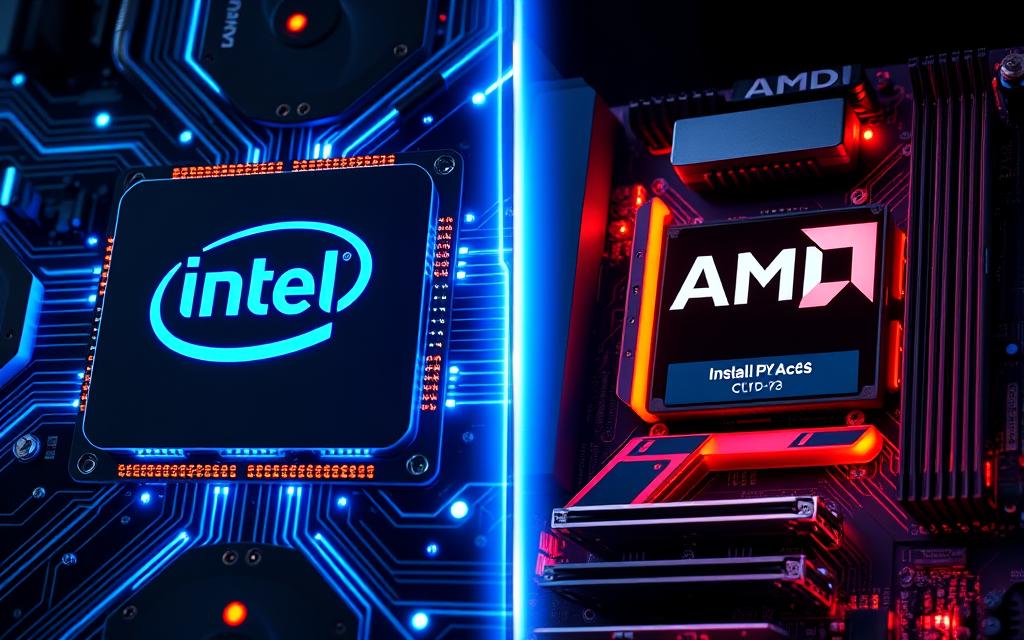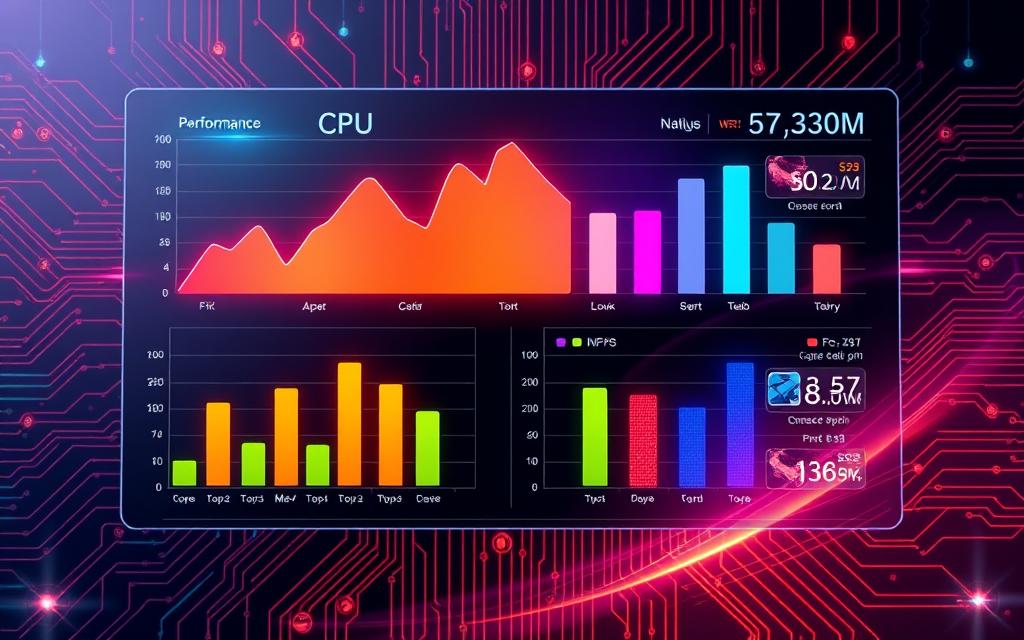Cinebench is a powerful benchmarking tool created by Maxon that allows you to evaluate your CPU’s performance effectively. With the latest version, Cinebench 2024, you can conduct both CPU and GPU performance testing by rendering 3D images. This application is accessible for users of all skill levels, making it simple to determine how your machine stacks up against others.
In just around 10 minutes, you can complete the benchmark tests, which assess single-core and multi-core capabilities. Additionally, you can choose to extend the testing duration up to 30 minutes, giving you insights into long-term performance stability. You’ll receive a performance score that reflects your CPU’s capability, offering valuable information on how your processor compares to similar models.
This guide will help you navigate using Cinebench effectively, ensuring you can unlock your CPU’s full potential while comparing performance scores across different processors. In doing so, you’ll not only achieve accurate performance measurements but also gain insights into the powerful tools that can refine your hardware choices.
Introduction to Cinebench and Its Importance
Cinebench serves as a vital tool in the realm of CPU performance testing, allowing users to gain insights into how well their processors perform under stress. This Cinebench tutorial focuses on its role in delivering consistent and reliable results critical for various users, including gamers, content creators, and 3D rendering professionals.
By simulating real-world workloads, Cinebench enables effective performance checks that can help identify potential issues or areas for improvement. Its significance lies in its ability to facilitate comparisons between different systems. As you navigate the technological landscape, knowing your system’s capabilities sets the foundation for informed decisions regarding upgrades and optimizations.
In this expanding digital environment, Cinebench benefits from advancements such as support for a broader range of processors. From AMD and Intel x86/64 CPUs to Apple’s M-series processors, it provides benchmark tests that reflect current trends in computing technology. This evolution in benchmark testing aligns with the increasing demands placed on CPUs, especially with the rise of applications that require higher computational power. Understanding your Cinebench results can empower you to harness the full potential of your hardware.
System Requirements for Using Cinebench
Understanding the system requirements for using Cinebench is essential for achieving optimal performance. Each version demands specific hardware and software configurations to ensure accurate benchmarking results. Here, we will explore the minimum hardware requirements and operating system compatibility to help you set up your system appropriately.
Minimum Hardware Requirements
To effectively run Cinebench 2024, your system needs to meet certain minimum hardware requirements. These include:
- 16 GB of RAM is required for both Windows and macOS systems.
- A 64-bit Intel or AMD CPU is necessary, specifically with AVX2 support for Windows.
- For systems utilizing Apple Silicon, a minimum of 16 GB of unified memory is required, though 8 or 12 GB can work for CPU rendering with reduced performance.
- For GPUs in Cinebench 2024, a minimum of 8 GB GPU memory is essential, with 16 GB needed for Apple silicon machines running Redshift GPU.
These specifications will help avoid compatibility issues and ensure your benchmarks are both reliable and efficient.
Operating System Compatibility
Cinebench 2024 supports a variety of operating systems. Ensuring that your OS aligns with the necessary specifications is crucial. The supported OS for Cinebench includes:
- Windows 10 (Version 20H2 or higher) and Windows 11.
- macOS 11.7.7 (Big Sur) for CPU tests and version 12.6 (Monterey) or higher for GPU benchmarks.
Matching your operating system compatibility with these requirements will further enhance your Cinebench experience. Failing to adhere to these could lead to limitations in performance or functionality, so check your system before proceeding.
How to Download and Install Cinebench
Getting started with Cinebench involves a straightforward process for downloading and installing it on your preferred operating system. This benchmarking tool helps you evaluate CPU performance effectively. Below, explore where to find Cinebench and follow the specific installation steps for both Windows and macOS users.
Finding Cinebench on Different Platforms
To download Cinebench, head over to Maxon’s official website. Windows users can also find it conveniently in the Microsoft Store, while macOS users can download it from the App Store. Choosing the right platform ensures compatibility with your operating system and optimizes performance.
Installation Steps for Windows and macOS
Installing Cinebench is similar across different operating systems. Follow these streamlined installation steps to get started:
- For Windows:
- Visit the Microsoft Store or Maxon’s website.
- Click on the option to download Cinebench.
- Once the download is complete, run the installer.
- Follow the on-screen instructions to complete the installation.
- For macOS:
- Go to Maxon’s website or the App Store.
- Click the download button for Cinebench.
- After downloading, drag the application into your Applications folder.
- Make sure your settings allow installations from external sources if prompted.
After the installation, you’re ready to launch Cinebench and start benchmarking. Remember to check your system settings to ensure everything is configured for optimal performance before diving into your tests.
Using Cinebench: Steps to Run the Benchmark
After installing Cinebench, you are ready to explore its features. The software provides a straightforward interface where you can select between single-core and multi-core tests. Each of these tests is designed to evaluate CPU performance under different conditions, helping you understand how your hardware operates in various scenarios.
Choosing Between Single-Core and Multi-Core Tests
The single-core vs multi-core decision is vital before proceeding with the tests. The single-core test measures performance when applications rely on a single thread, showcasing how well your CPU handles tasks that are less demanding or waiting on specific processes. This test can be particularly beneficial for older software or basic applications.
In contrast, the multi-core test evaluates how your CPU performs under high-load, multi-threaded scenarios. This test is essential for modern applications, especially those related to video editing, 3D rendering, or gaming that leverage multiple cores. Both Cinebench tests take about 10 minutes to complete, ensuring enough time to assess your system reliably.
Advanced Benchmark for Extended Testing
If you need deeper insights into your CPU’s capabilities, consider utilizing the advanced benchmark mode. This feature extends the length of your tests beyond the standard time frame, providing a more thorough evaluation of performance under sustained loads. To access this, navigate to File > Advanced Benchmark, where you can choose a duration that suits your needs, up to 30 minutes.
Extended testing is particularly useful for assessing cooling solutions and ensuring that your CPU maintains optimal performance levels throughout the test period. By allowing your system to soak and stabilize, you can gather more accurate data, leading to better-informed decisions regarding upgrades or optimizations. Integrating these benchmarks into your performance evaluation can significantly enhance your understanding of how your hardware performs under various conditions.
Understanding Your Cinebench Performance Score
Once you have completed the Cinebench tests, you’ll receive a clear performance score indicating your CPU’s efficiency. This score appears next to the button you used to start the test and serves as a helpful reference point for interpreting results. Typically, higher scores suggest better performance, which is crucial when evaluating your CPU against others in the market.
Interpreting Benchmark Results
When interpreting results from Cinebench, it’s essential to consider the context of your performance score. Scores can vary significantly based on several factors, such as the CPU model, RAM configuration, and even background processes running during the test. For instance, AMD processors can show performance scores ranging from 6027 to 23335, while Intel chips fall between 184 and 27725. This variation highlights the importance of running tests under optimal conditions to achieve accurate benchmarking results.
Comparing Performance Scores with Other CPUs
Cinebench offers a built-in feature that allows you to compare your performance score against a wide array of other CPUs. This CPU comparison is valuable in determining how your processor stacks up against the competition. It’s advisable to be cautious when comparing performance scores from different versions of Cinebench, as enhancements in newer versions can lead to discrepancies. For example, Cinebench 2024 has increased the computational effort and memory requirements compared to earlier versions like R23, affecting score results.
For your reference, here’s a performance score overview of various notable CPU categories:
| Processor Type | Performance Score Range |
|---|---|
| AMD Processors | 6027 – 23335 |
| Intel Processors | 184 – 27725 |
| AMD Ryzen Threadripper | 20892 – 38656 |
| Intel Core i9 | 14705 – 15306 |
| Apple M Series | 9104 – 40081 |
Common Mistakes to Avoid When Using Cinebench
Running benchmarks with Cinebench is an efficient way to gauge your CPU’s performance. To achieve accurate and reliable results, you need to avoid some common mistakes that can skew your findings. Two critical areas to focus on are the presence of background applications and the condition of your power settings and cooling solutions.
Running Tests with Background Applications Open
A frequent issue many users encounter is running Cinebench while background applications remain open. These background applications consume system resources, leading to compromised performance scores. For reliable data, close all unnecessary programs before starting your benchmark test. This practice ensures that your system is dedicated solely to Cinebench, delivering a score that reflects your CPU’s true capabilities.
Ignoring Power Settings and Cooling Solutions
Another common mistake relates to your system’s power settings. Failing to adjust your power settings can significantly impact your benchmark results. Be sure your PC is plugged in and configured for maximum performance rather than power-saving modes. Additionally, consider your cooling solutions. Inadequate cooling can result in overheating, throttling CPU performance during the benchmark. Proper airflow and cooling systems are essential for maintaining optimal performance, ensuring that your scores accurately represent your CPU’s potential.
By being mindful of these common mistakes, you can improve the reliability of your Cinebench results and gain better insights into your CPU’s performance.
| Common Mistakes | Impact on Performance | Solution |
|---|---|---|
| Running background applications | Skewed performance scores | Close all apps before testing |
| Ignoring power settings | Lower performance due to power-saving modes | Set PC to maximum performance |
| Inadequate cooling solutions | CPU throttling and inaccurate results | Ensure proper airflow and cooling |
Conclusion
Using Cinebench is an invaluable tool for evaluating your CPU’s performance and ensuring that it meets your specific needs. By familiarizing yourself with the requirements, installing the software, and navigating its features correctly, you can run meaningful performance tests. The latest version, Cinebench R23, provides a straightforward method for benchmarking, requiring just a 10-minute test to gauge your CPU’s rendering capabilities accurately.
The insights gained from your Cinebench scores are essential, especially when considering potential hardware upgrades. With a multi-core score over 10,000 signifying strong performance for high-end CPUs, and scores above 5,000 being decent for mid-range processors, you can clearly understand where your CPU stands in the market. In addition, the introduction of Cinebench 2024 expands this analysis by incorporating both CPU and GPU rendering, thereby providing more holistic performance evaluations.
Regular benchmarking allows you to track your system’s capabilities over time, helping you make informed decisions about upgrades and ensuring optimal performance for your tasks. In a constantly evolving tech landscape, maintaining awareness through rigorous CPU testing summary will keep your systems aligned with the industry’s demands and your personal or professional goals.










